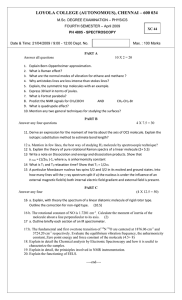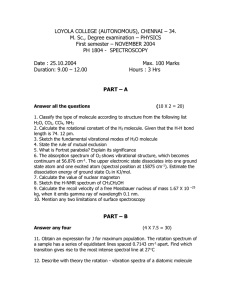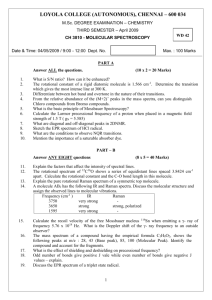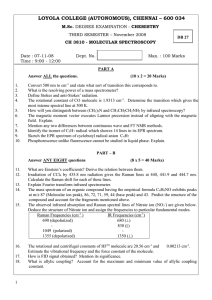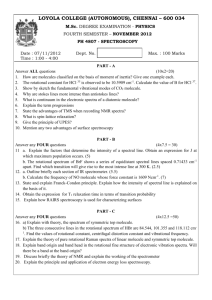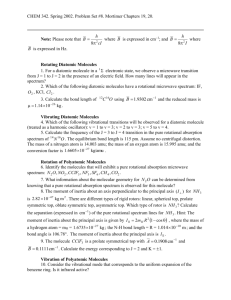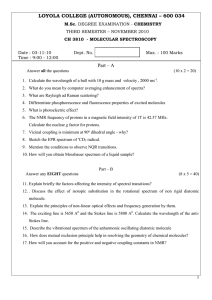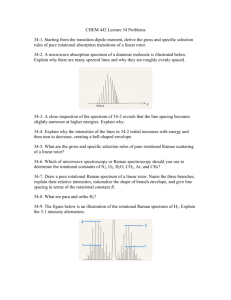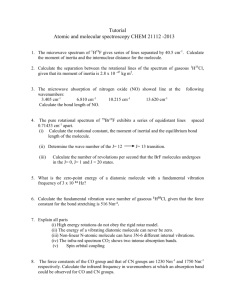PH 4807 - Loyola College
advertisement
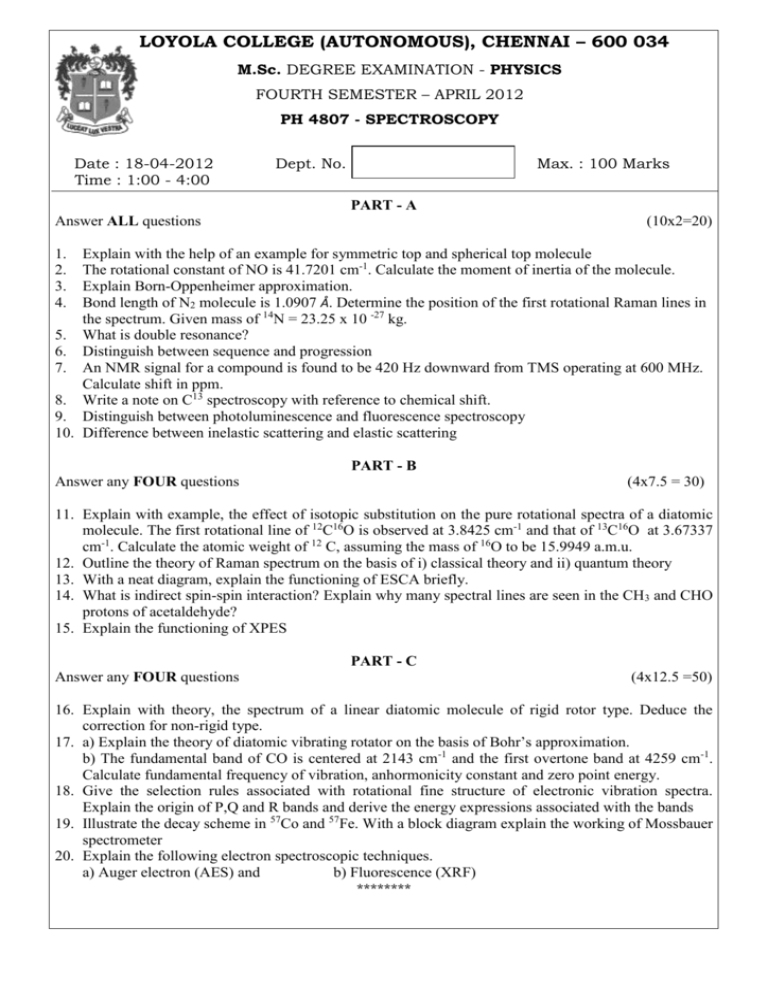
LOYOLA COLLEGE (AUTONOMOUS), CHENNAI – 600 034 M.Sc. DEGREE EXAMINATION - PHYSICS FOURTH SEMESTER – APRIL 2012 PH 4807 - SPECTROSCOPY Date : 18-04-2012 Time : 1:00 - 4:00 Dept. No. Max. : 100 Marks PART - A Answer ALL questions (10x2=20) 1. 2. 3. 4. Explain with the help of an example for symmetric top and spherical top molecule The rotational constant of NO is 41.7201 cm-1. Calculate the moment of inertia of the molecule. Explain Born-Oppenheimer approximation. Bond length of N2 molecule is 1.0907 Å. Determine the position of the first rotational Raman lines in the spectrum. Given mass of 14N = 23.25 x 10 -27 kg. 5. What is double resonance? 6. Distinguish between sequence and progression 7. An NMR signal for a compound is found to be 420 Hz downward from TMS operating at 600 MHz. Calculate shift in ppm. 8. Write a note on C13 spectroscopy with reference to chemical shift. 9. Distinguish between photoluminescence and fluorescence spectroscopy 10. Difference between inelastic scattering and elastic scattering PART - B Answer any FOUR questions (4x7.5 = 30) 11. Explain with example, the effect of isotopic substitution on the pure rotational spectra of a diatomic molecule. The first rotational line of 12C16O is observed at 3.8425 cm-1 and that of 13C16O at 3.67337 cm-1. Calculate the atomic weight of 12 C, assuming the mass of 16O to be 15.9949 a.m.u. 12. Outline the theory of Raman spectrum on the basis of i) classical theory and ii) quantum theory 13. With a neat diagram, explain the functioning of ESCA briefly. 14. What is indirect spin-spin interaction? Explain why many spectral lines are seen in the CH3 and CHO protons of acetaldehyde? 15. Explain the functioning of XPES PART - C Answer any FOUR questions (4x12.5 =50) 16. Explain with theory, the spectrum of a linear diatomic molecule of rigid rotor type. Deduce the correction for non-rigid type. 17. a) Explain the theory of diatomic vibrating rotator on the basis of Bohr’s approximation. b) The fundamental band of CO is centered at 2143 cm-1 and the first overtone band at 4259 cm-1. Calculate fundamental frequency of vibration, anhormonicity constant and zero point energy. 18. Give the selection rules associated with rotational fine structure of electronic vibration spectra. Explain the origin of P,Q and R bands and derive the energy expressions associated with the bands 19. Illustrate the decay scheme in 57Co and 57Fe. With a block diagram explain the working of Mossbauer spectrometer 20. Explain the following electron spectroscopic techniques. a) Auger electron (AES) and b) Fluorescence (XRF) ********
